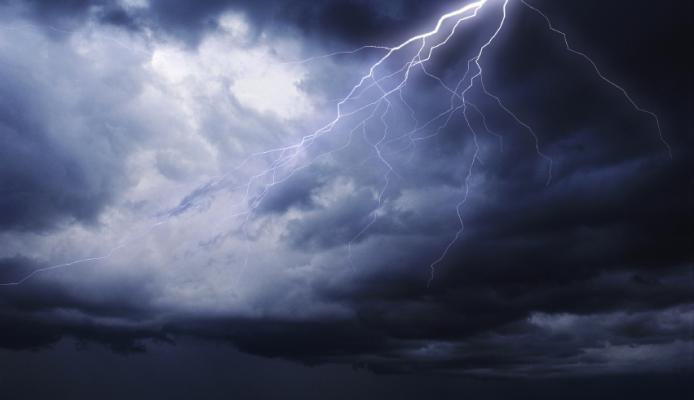Storms can generate inclement and potentially destructive weather. Operational impacts to aviation may come from extreme temperatures, limited visibility and low cloud ceilings, various forms of precipitation including icing conditions aloft or on the ground, lightning, strong wind that can carry dust and debris, wind shear, and turbulence. Impacts include safety hazards to personnel on the ground, crew and passengers in flight, aircraft performance limitations or damages, flight reroutes or diversions, delays due to airspace or airport capacity limitations, and flight cancellations. Storms may form and organize in varied ways across multiple scales, from shorter-duration smaller isolated convective storms to very large and highly organized storm systems that may last for several days.
Research and Development Areas
Storm Observations
The primary tools to observe storms include radar and satellite, accompanied by surface weather stations that may include a variety of in situ and remote sensors. Detailed analysis of the storm characteristics yields insights that build the basis for prediction of a storm’s evolution, including movement, growth and eventual decay.
- Weather observations and improvements
- Dual-polarization radar
- Satellite observations
- Global convective weather hazards
Storm Nowcasting
Short-term predictions of storm motion and evolution is often referred to as nowcasting. Nowcasting of storms is largely guided by observation-based empirical approaches (heuristics) and covers an outlook horizon of up to 6 – 8 hours. Outlook times beyond a couple of hours may be achieved by incorporating numerical weather prediction as well.
- Thunderstorm Identification, Tracking and Nowcasting (TITAN)
- AutoNowcaster
- Consolidated Storm Prediction for Aviation (CoSPA)
- Fine-scale Analysis and Nowcast System (FINECAST)
- Maintenance Decision Support System (MDSS)
- Terminal area icing
Storm Forecasting
Longer-term storm forecasting relies on numerical weather prediction that builds upon detailed mathematical formulations of the scientific processes taking place throughout the atmosphere. These formulations capture the dynamic, thermodynamic, microphysical, and other relevant atmospheric processes that govern the initiation of storms and their subsequent evolution (i.e., growth, organization, movement decay). Numerical weather prediction is initialized by observations that are smartly assimilated into the processing.
Prediction Uncertainty
Achieving reliable and accurate storm forecasts remains a scientific challenge due to uncertainty in grasping the initial conditions (e.g., limited observations and ability to assimilate them), shortcomings in model physics (e.g., parameterization of subgrid-scale processes) and computational capabilities (e.g., resolution in space and time, processing speed), and limitations of our understanding of how nature works (e.g., missing processes that might be relevant). The forecast skill of observation-driven expert systems decreases rapidly with increasing lead-time, while numerical weather prediction models typically exhibit a limited forecast ability within the first few hours after initialization primarily due to spin-up problems.
Probabilistic prediction attempts to capture the forecast uncertainties by means of techniques that include ensemble forecasts (e.g., created by assembling time-lagged forecast runs, combining multiple parallel forecast runs, selecting multiple analogue forecasts from past runs, and/or creating an ensembles of diagnostics) and statistical post-processing (e.g., based on data mining and/or artificial intelligence approaches).
